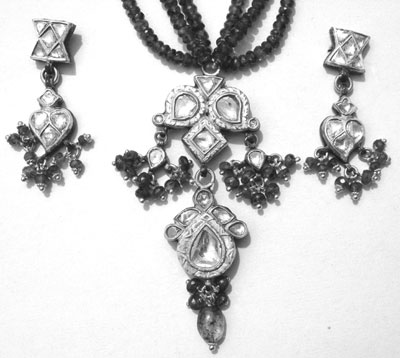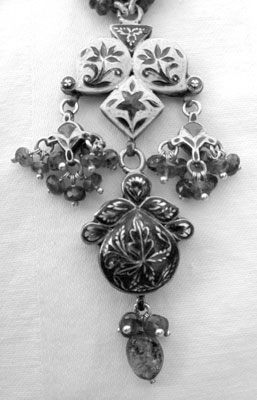Jewelry Shopping: Treasures in India, Istanbul’s bazaar
Treasures in India
What woman wouldn’t devour the readers’ letters on jewelry shopping (March ’06, pg. 54)? In the 30 or so countries I’ve visited, India has presented by far the most diverse marketplace, where treasures worthy of Christie’s are sold near dime-store trinkets.
In October-November ’05, my daughter and I traveled to India on the 14-day tour “Highlights of India” with Abercrombie & Kent (Oak Brook, IL; 800/323-7308 or www.abercrombiekent.com). The cost was $4,865 per person.
In Delhi, off Chandri Chowk we had ridden in rickshaws past many jewelry stores but had not had time to shop. So when we reached Jaipur, the jewelry capital of Rajasthan, I was excited to be inside a jewelry store at last, one recommended by Abercrombie & Kent: Bhandari Jewellers (5, Dashera Kothi, Amer Road, Jaipur, 302002, India; phone 0141-2630654 or 2630658, fax 0141-2630632 or e-mail mail@bhandarijewellers.com or bharatbhandari24@hotmail.com).
I intended to purchase a piece of costume jewelry in the kundankari style, which developed during the 16th-century Mughal reign and provided emperors and maharajahs opulent settings for their finest gems. The real McCoy uses highly refined gold as the base onto which precious and semiprecious stones are set in intricate designs. Purified gold wire outlines the jewels.
From among the few costume pieces available, I chose an ornate necklace for about $300. Everything else in the store dazzled. Chokers worthy of Cleopatra abounded. One ring with an emerald the size of a robin’s egg cost half a million dollars. I tried it on just for fun.
My daughter, Anna, who was my traveling companion, desired a pair of gold, drop earrings set with tiny diamonds that resembled stars. I considered buying them for her upcoming birthday.
“Why don’t you buy a real piece for yourself?” Anna asked.
“Just try this on,” said the jewelry wallah, handing me a necklace. Double strands and clusters of small emeralds embraced a gold kundankari pendant ornately set with diamonds. The back, worked in green and gold enamel, was almost as stunning as the bejeweled front.
“What touches your skin should be as beautiful as what people see,” the wallah told me.
The necklace was elegant; it was gorgeous; it was irresistible, and it had matching earrings.
After lengthy bargaining, Anna and I left the store clutching our treasures. For the necklace and two pairs of earrings, I spent about $2,000 — a bargain by U.S. standards. We both had shopper’s high.
You can shop almost anywhere in India if you can cross the streets. No signals or crosswalks exist to stop the tsunami of vehicles: trucks, buses, cars, auto-rickshaws, camel carts, cycle-rickshaws and bicycles. You must walk slowly so that the drivers of this onslaught will surmise your intent and be able to swerve around you. Running is strictly prohibited, though walking, quite unnerving.
MARY ANNE DeBRIYN
La Canada-Flintridge, CA
Istanbul’s Bazaar
I’m not much of a shopper, at home or abroad, but when I was in Istanbul, Turkey, in 1972 I couldn’t help but look around in the Bazaar. Earlier that year my apartment had been robbed, and among the things taken was a ring that had belonged to a beloved aunt. It-was unusual: five gold bands connected together with small rubies, emeralds and sapphires joined with diamond chips and a diamond in the center.
I had no idea where the ring came from, but suddenly, in the Bazaar, there was the same design, only with rubies and pearls.
The bargaining, which I don’t feel too comfortable about, continued until we finally settled on what I considered a wonderful price. I’ve never had the ring appraised, but the monetary value is unimportant. I still have it and think of both my aunt and Istanbul when I wear it.
The price I paid? $23 and a kiss!
BARBARA MALLEY
New York, NY


